Quality Check
![]()
Introduction
SimLab generates mesh that can be used for different analysis types such as stress analysis, NVH analysis to name a few. Mesh of each of these analyses should meet certain quality criteria. It is also important to understand the definition of the quality measures clearly. The definition of these quality measures can differ from one software to another.
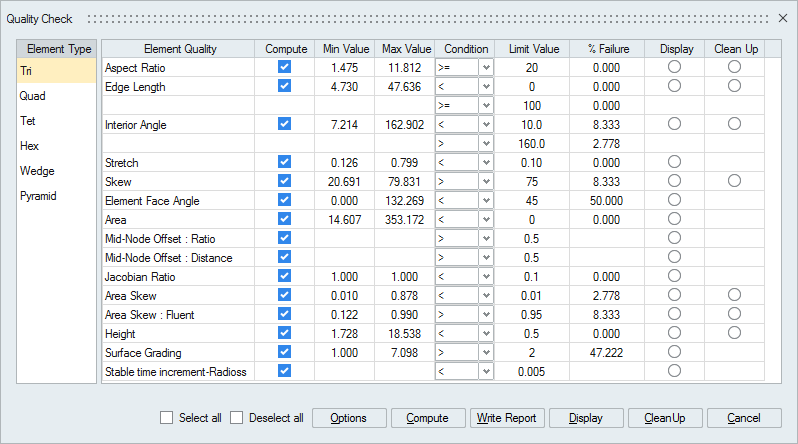
The quality measures are grouped based on element type and the element quality definitions are available in the link..
Any one of the following operations can be performedCompute
Computes the minimum and the maximum values of the quality measures for the elements present in the body. The quality measures selected under the "Compute" column alone will be computed.
The "Default Values" along with the "Condition" is used to find out the percentage of elements that do not satisfy the given criteria and these elements corresponds to the failed elements.
This supports computation of multiple quality types. If all the quality measures corresponding to an element type are to be selected, then selecting the option "Select All", selects all the quality measures in a single mouse click. Using "Deselect All" option, all the quality measures selected can be deselected with a single mouse click.
Write Report
This option writes the html report for the selected element quality. This will be enabled only after performing the Compute or Cleanup operation. User can append the selected element quality report in same html file by setting the AppendToFile dom attribute as true. This is mainly used for automation.
Display
Shows the elements that have failed the qualities measures of the quality type selected under "Display" column. Failed elements corresponding to only one quality type can be displayed at a time.
Cleanup
Automatic cleanup of a particular quality type selected under "Clean Up" can be done based on the quality measure specified by the user. Cleanup will be done based on the criteria specified using "Default Values" and "Condition".
- Preserve entities mesh controls is considered for tri and tet cleanup
operations.
This is used to avoid unwanted collapse in critical regions during cleanup operations. Following are the different cases where preserve entities mesh control is applicable.
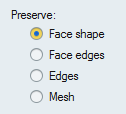
- To preserve mesh on the faces, apply preserve mesh control. Preserve mesh control applied faces will not be considered for cleanup operations.
- To preserve topological edges of the faces, apply preserve face edges or edges mesh control.
- To preserve planarity of the faces, apply preserve face shape mesh control.
Click on the below link will show a sample demo of tri cleanup operations with preserve entities mesh control. Tri CleanUp Demo
- Multiple cleanup is enabled only for TET element types.
- During TET clean up, the deleted nodes would be removed from the associated RBEs.
- Local Re-Mesh based cleanup is supported for the following
- Tri
- Aspect ratio
- Edge Length
- Interior Angle
- Area Skew
- Area Skew: Fluent
- Height
- Quad
- Interior Angle
- Tet
- Stretch
- Collapse ratio
- Tet collapse
- Skew
- Skew: Fluent
- Aspect Ratio
- Aspect Ratio: Nastran
- Hex
- Warpage
- Wedge
- Warpage
- Tri
- Move node-based cleanup is supported for the following.
- Tri
- Edge Length
- Interior Angle
- Skew
- Height
- Quad
- Edge Length
- Interior Angle
- Warpage
- Tet
- Aspect Ratio: Nastran
It will move the nodes along the element edges to achieve the mesh quality. After cleanup by "Move Node" method, a group will be created. This group contains the elements which are modified during auto cleanup.
Add this environmental variable "SL_MOVE_DISTANCE = 3.0(distance value)" to restrict the node movement beyond the given distance value.
This can be set by Clicking the "Options" button.
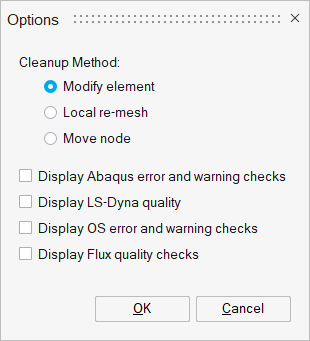
Preserve surface skew toggle can be set, so as to not degrade the surface skew quality during TET skew cleanup. This toggle is shown only if "Enable CFD modelling tools" toggle under View | Preference is turned ON.
- Tri
- Undo is supported for "Modify element" and "Move node" Cleanup methods for TRI and QUAD element types.
- Preserve surface nodes – This option will preserve the surface mesh in Tet
cleanup operation. This option will be shown only for the Tet element type.
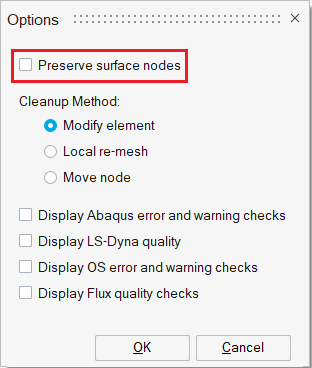
- Element input is supported only for Tet. This will allow the user to select the failed elements and call the cleanup. By default, 3 layers of elements will be considered for clean-up. The number of layers considered for clean-up can be adjusted using, “File | Preferences | Mesh | Number of Tet-Element layers considered during local mesh modification” option.
The script command for the quality check does return the computed values in dictionary format. Users can manipulate the returned values.
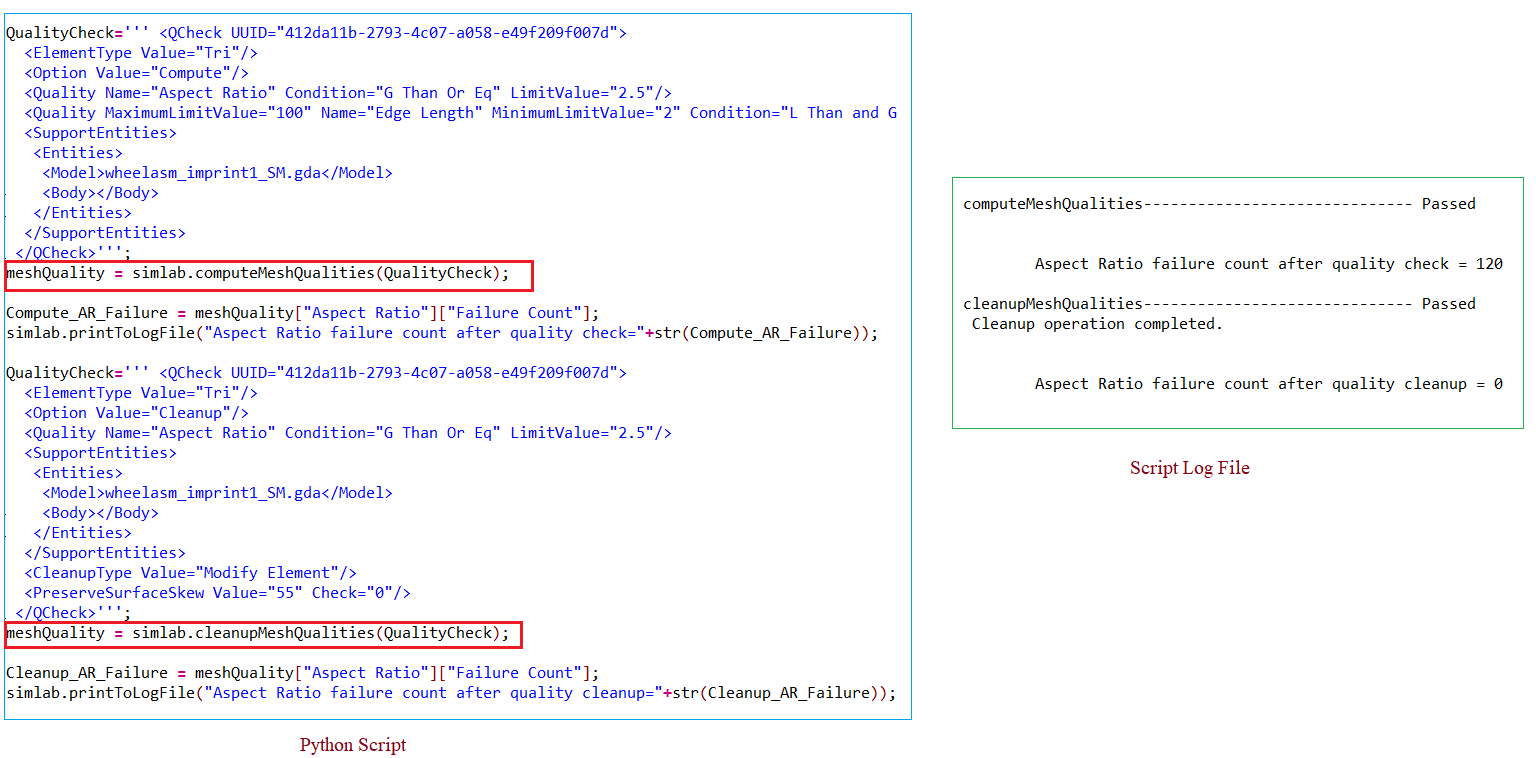
Solver based quality check
Solver based quality check is supported for LS-Dyna, OptiStruct, Abaqus and Flux. There are toggles in "Options" dialog to display these quality check.
- Element quality check for LS-Dyna is supported for Tri, Quad, Tet, Hex and Wedge. Tuning on "Display LS-Dyna quality" will list the qualities for each element.
- Turning on "Display Abaqus error and warning Checks" toggle will list the Abaqus
Warning and Error check options for Solid Elements - Tet, Hex and Wedge. Abaqus
Warning and Error checks will help in verifying whether the model meets Abaqus
Element warning and error criteria before running it through Abaqus Solver. Abaqus
warning and error cleanup is supported for Tet elements using modify element
method.

- Similarly, "Display OS error and warning checks" will display the quality check for
OptiStruct. The following qualities calculated for each element and report will be
posted in output window. Error and validity cleanup for OptiStruct is supported for
hexahedral (hex) elements using the Modify Element method.Note: Cleanup is supported for hexahedral (hex) elements that fail due to edge angle, skew angle, vertex angle, or warp angle issues.
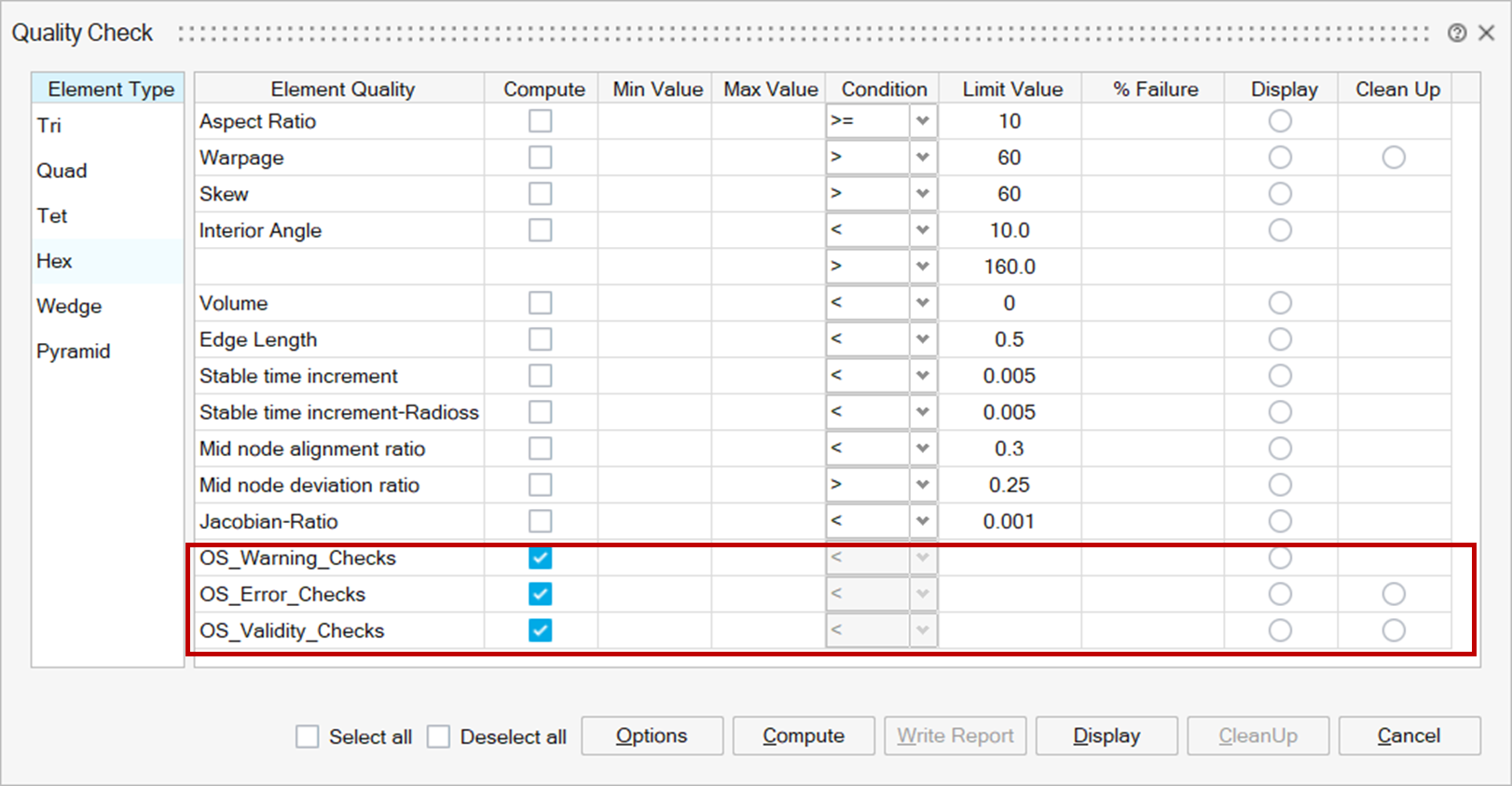
- Display Flux quality checks: Flux solver related qualities will be displayed for
Tet and Quad element types.
- Quad - Flux: Ratio of area to the square of perimeter
- Tet - Flux: J Y Talon.
Total Count and Failure Count
This represents the total number of elements in the selected entities and the number of elements failed. It is enabled by using right click menu in the column header as shown in the below image.
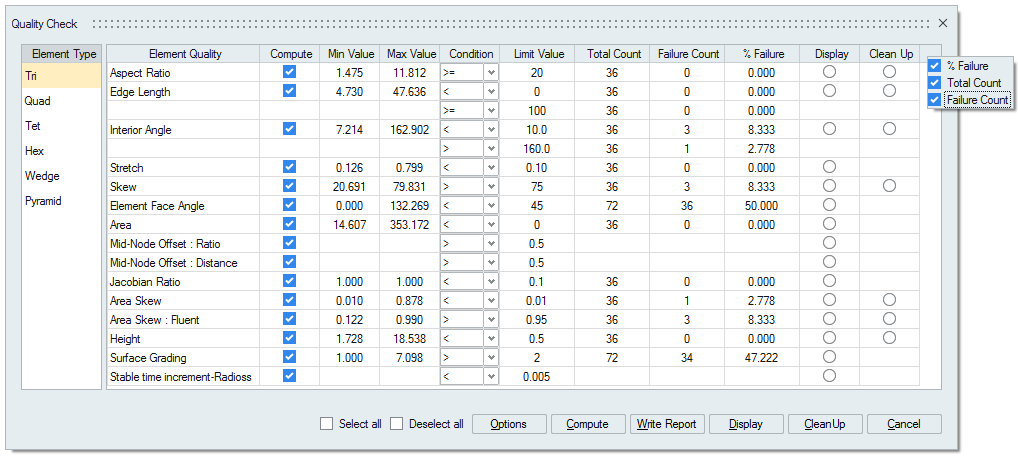
The quality measures grouped based on element types are briefed under Element quality definition.